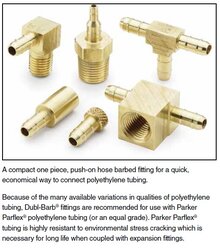semipro
Minister of Fire
RE the leaking crimp connections: perhaps the installers crimpers were not properly adjusted. (as I type I see that Highbeam just posted the same thought)
RE: "ridges versus barbs" - a terminology issue? My understanding is that ridges are flat and barbs are angled so that hose pushes on much easier than it comes off.
RE: "ridges versus barbs" - a terminology issue? My understanding is that ridges are flat and barbs are angled so that hose pushes on much easier than it comes off.
Last edited:


